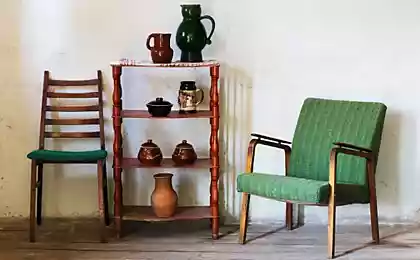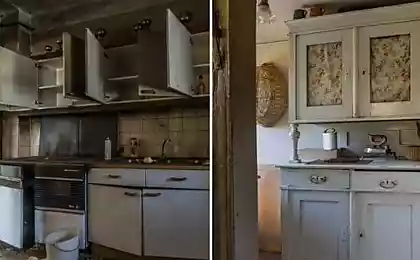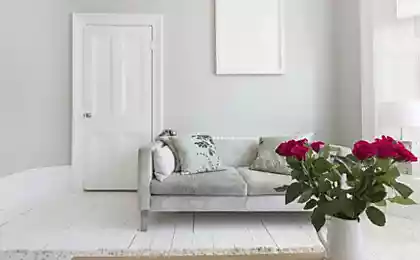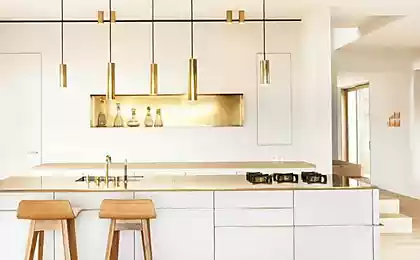128
Housing chopping guide
Classic Japanese Interior This is a surprisingly empty space, by our standards, in which, at first glance, there are almost no pieces of furniture.
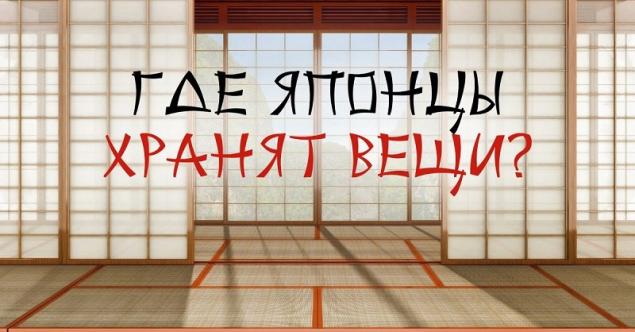
Minimalism is everywhere. Only a tea table can stand in the room, and a twisted mat can lie in the corner. Where do the Japanese keep their things?
The matter is not even in furniture, but in Japanese cultural traditions built on the principles of Buddhism and Shinto. Emptiness, lack of fulfillment, is one of the three characteristics of existence in Buddhism.

A clean house in Shinto is a pledge of good fortune and favor of the deities. The word “kirei,” meaning “pure,” also means “beautiful.”
Small areas of apartments taught the Japanese to create space in a modest dwelling. Frequent earthquakes led to the choice in favor of light and mobile furnishings.
The Japanese never buy anything extra, they spend their money as rationally as possible. For example, if a Japanese man lives alone in an apartment, he has only one plate and one fork.

The Japanese have furniture. The catwalks, which often become part of Japanese interiors, are actually very roomy storage spaces.
Hatches, drawers and niches in the floor are able to accommodate the most necessary things, and the rest of the items are hidden in built-in cabinets painted in the color of the walls.

For centuries, the Japanese slept and sat on futons - special mattresses. Only after many centuries of European traditions came beds, sofas, armchairs and chairs.
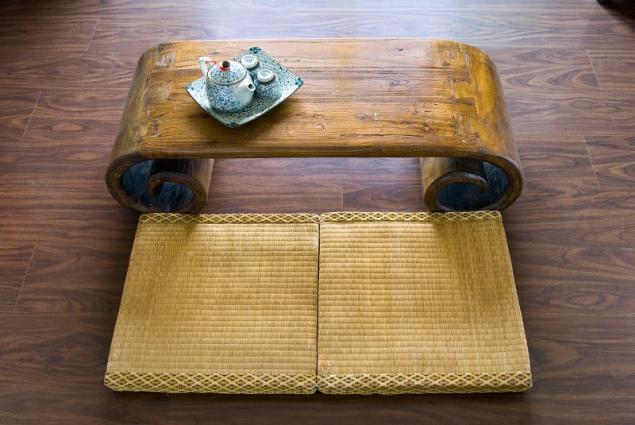
And still a place for rest are often wicker mats, small pillows and mats of fabric, which at any time can easily be removed from the room.

To fill the room with light and create a sense of space help traditional Japanese door Transparent paper on a thin wooden frame (known as shoji).

The Japanese style of interior design offers its own, special option for the familiar European furniture. If you saw off the legs of an ordinary European chair, and shorten the legs of the table by several tens of centimeters, you will get a completely traditional Japanese dining set.
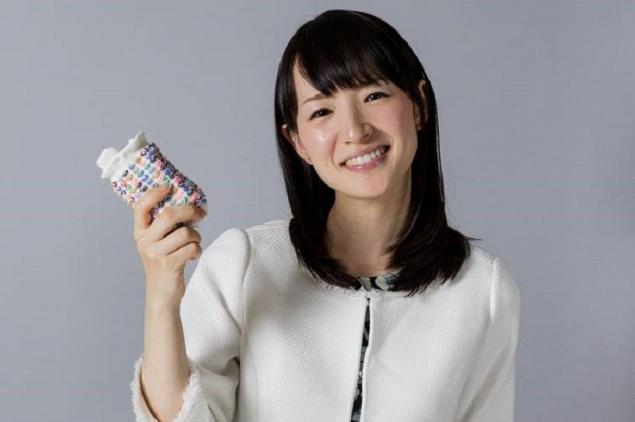
The author of best-selling books on the organization of home life Japanese Marie Kondo is sure that if people get rid of really unnecessary things, they will be much happier.
A clean, uncluttered space in which a person is located can significantly improve his emotional state. I like one of her tips: If you haven't used a thing in a year, just throw it away or give it to someone.
The philosophy of Japanese interior can be described as “beauty in small”, without pathos, flashy colors and unnecessary details.
Psychologists note that the apartment, decorated in Japanese style, peacefully affects all its inhabitants, helps to feel calm and relax.

Minimalism is everywhere. Only a tea table can stand in the room, and a twisted mat can lie in the corner. Where do the Japanese keep their things?
The matter is not even in furniture, but in Japanese cultural traditions built on the principles of Buddhism and Shinto. Emptiness, lack of fulfillment, is one of the three characteristics of existence in Buddhism.

A clean house in Shinto is a pledge of good fortune and favor of the deities. The word “kirei,” meaning “pure,” also means “beautiful.”
Small areas of apartments taught the Japanese to create space in a modest dwelling. Frequent earthquakes led to the choice in favor of light and mobile furnishings.
The Japanese never buy anything extra, they spend their money as rationally as possible. For example, if a Japanese man lives alone in an apartment, he has only one plate and one fork.

The Japanese have furniture. The catwalks, which often become part of Japanese interiors, are actually very roomy storage spaces.
Hatches, drawers and niches in the floor are able to accommodate the most necessary things, and the rest of the items are hidden in built-in cabinets painted in the color of the walls.

For centuries, the Japanese slept and sat on futons - special mattresses. Only after many centuries of European traditions came beds, sofas, armchairs and chairs.

And still a place for rest are often wicker mats, small pillows and mats of fabric, which at any time can easily be removed from the room.

To fill the room with light and create a sense of space help traditional Japanese door Transparent paper on a thin wooden frame (known as shoji).

The Japanese style of interior design offers its own, special option for the familiar European furniture. If you saw off the legs of an ordinary European chair, and shorten the legs of the table by several tens of centimeters, you will get a completely traditional Japanese dining set.

The author of best-selling books on the organization of home life Japanese Marie Kondo is sure that if people get rid of really unnecessary things, they will be much happier.
A clean, uncluttered space in which a person is located can significantly improve his emotional state. I like one of her tips: If you haven't used a thing in a year, just throw it away or give it to someone.
The philosophy of Japanese interior can be described as “beauty in small”, without pathos, flashy colors and unnecessary details.
Psychologists note that the apartment, decorated in Japanese style, peacefully affects all its inhabitants, helps to feel calm and relax.



